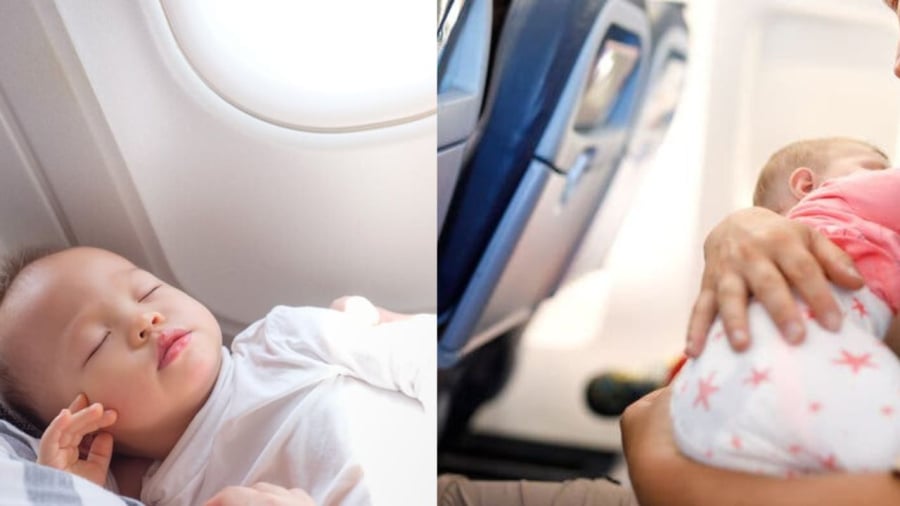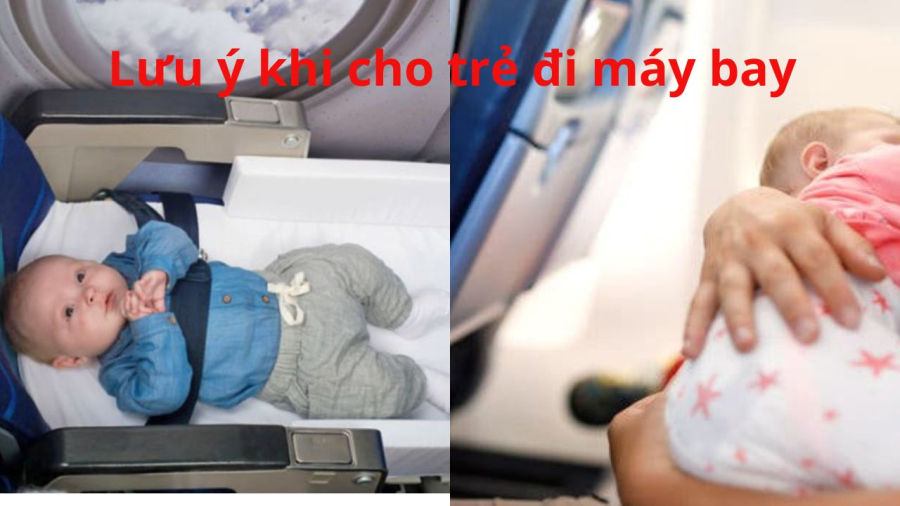Aircraft is a convenient means of transportation for long distances. However, when bringing a small child on board, you need to be extremely careful to ensure the safety of the child. Normally, we often let the baby sit on our lap and extend the seat belt. However, according to the recommendation of the Federal Aviation Administration (FAA), all young children should bring their own seat like a car when boarding an aircraft. Having the child sit in their own seat will be safer than sitting on the lap of the parents.

When a child sits on the lap of the parents during a flight, they may encounter adverse effects that the parents are still negligent about. Aircraft often have to go through areas of turbulence and can drop from an altitude of over 12,000 meters in an instant. At that time, the G-force (relative acceleration of an object compared to free fall) will make it difficult for parents to hold their child tightly. Almost all flights experience turbulence. In some cases, passengers’ carry-on baggage even falls everywhere. Therefore, if we leave the child on our lap, it is difficult to ensure their safety.
Safety precautions for children
Children under 2 years old should have their own seat. You should bring a car seat for the child to sit on the aircraft. To make everything go smoothly, you should discuss this with the airline beforehand. You should discuss whether the airline provides support or what to do if you bring your own seat to ensure a safe trip.
Children over 2 years old must have their own seat and fasten their seat belt like adults. The best seating position is in the front row near the partition, window, or near the lavatory in the economy class. Because here the aisle is wide, making it easier for parents to take care of their child. However, it is advisable for the child to sit near the window as it can be distracting and they will sit more calmly than in other positions. This position is also closer to the lavatory, which will be more convenient for the child without having to walk through a long aisle.
When can a child travel by plane?
Babies from 2-3 months old can travel by plane because at that time, the child has just built up their immunity and can withstand the pressure when flying. The air on the plane is a closed space with many bacteria, so if you travel too soon, the child is more likely to get sick. Premature babies need to wait longer to become healthier.
Also, there shouldn’t be too many infants on a flight, preferably no more than 16 babies. Some airlines accept transporting babies from 14 days old who are born full-term and in good health. Vietnam Airlines accepts babies as young as 7 days old to travel by plane but does not accept newborns who are not in good health or kept in an incubator.
When adults bring small children, each person is only allowed to bring 1 child, and remember to bring identification documents.

When flying, you also need to be aware that if your child is sick before the flight, you should check with a doctor before boarding to see if it is suitable for the child to travel.
You should bring essential items for your child in your carry-on luggage such as clothes, diapers, water, pacifiers, toys… You can let the child suck on a pacifier during takeoff and landing to reduce ear discomfort. When entering a turbulent area, the child should not suck, drink water, etc.
You should choose a flight that is suitable for your child’s sleep schedule. If the baby sleeps during the flight, the journey will be smoother for both you and the baby.
It is absolutely necessary to only let young children travel when it is truly necessary because each flight can potentially make the child sick, exposed to bacteria, and having ear pain…






























